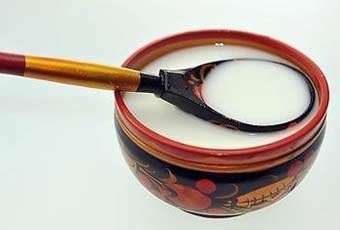Features of Inner Mongolia food
The nomads that live in Inner Mongolia sustain primarily from products that are derived from cattle, sheep, horses and yaks, which are domesticated. Meat is mostly cooked or used in soups and dumplings. The large percentage of animal fat in Mongolian diets helps the natives to withstand the cold and also work outdoors.
The milk and cream derived from these animals is used to make diverse beverages, cheese and other such products.
The Inner Mongolia prairie is rich in all kinds of venison such as wild chicken, potherb, wild fungus and so on. The most outstanding cates are Baked whole sheep, Baked Gigot, Hand-tore Mutton, Crème, etc.. While eating the meat, you could taste its kumiss, surely the flavor will be a long aftertaste.
Local Cuisines

Roasted Whole Sheep
It is the traditional cuisine to entertain the honoured guest or to celebrate the grand pageant in Mongolia. The sheep is selected aboratively, about 20 kilogramme each one. The whole shape is dressed, stuffed with seasonings such as shallot, ginger, salt, etc., then baked. The cuisine keeps the complete shape of the sheep, kneeled down in a square trencher, and is prized for the fresh color, crispy skin, and tender, aromatic meat.
Naked Oat Flour
Naked oat is a kind of oat. Naked oat flour is processed out of naked oats. The naked oats, a cold-resisting, salt-alkali-resisting and low-yield crop with a short mature period, contain high protein, fat and many kinds of microelements, such as iron, calcium and phosphorus and so on.
The naked oat flour is often processed in a special way. After washing and drying by airing, the naked oats will be baked and then milled into flour. The flour can be made into noodles and some other kinds of food.
Roasted Gigot
Baked Gigot is one of the traditional Inner-Mongolia cuisines. It is so famous for its delicious and the origin from the National Hero Genghis Khan’s admiration. The Baked Gigot is quicker and more delicious than the whole baked sheep. Gash the cross on the skin, add carrot thread, shredded celery, shallot thread, ginger, tomato, pepper, sauce, refined salt and bree, then roast about for 4 hours in the oven. Its nice sculpt and fragrant taste are highly appreciated.
 Hand-tore Mutton
Hand-tore Mutton
Handlebar Mutton, as the name suggests, means that the mutton is taken by hand directly. It had been the essential food for the Herdsman to serve guests It will be a deeply pity if you don’t taste the Handlebar Mutton in you grassland tour. Divided the mutton into several pieces according to the articulations, then boil in the soup, when the mutton changes color, it could be taken.
Millet Stir-fried in Butter
Millet Stir-fried in Butter means Mongolian millet in Mongolian. Dip the millet in water, after steam, fry and grind, the rip millet is made-up. It could be eaten in several methods, for example, mix it with butter, crème, cheese, mutton and beef or mix without any thing, aromatic all the same.
Genghis Khans Favourite Sizzling Meat
This dish is very popular in Central Asia, Southern Russian and other parts of the world. According to a saying, Genghis Han liked this dish very much, who had led his army to conquer other tribes and countries, thus this dish also got spread. The making of the dish is unique. Meat, like mutton, pork, beef, chicken and fish will be sliced firstly, then roast it on a heated iron plate, and then season it with sauce, pepper, mustard, ginger and mashed garlic when eating. It’s delicious and fragrant with a special flavor.

Kumiss
Kumiss, the traditional belly-wash of llano, has been passed down two thousands of years. The Kumiss is cool, refreshing and with lower alcoholicity, besides, it also has the function of dispelling cold, and strengthen stomach. Especially in summer, it is the best time to drink Kumiss, and the aromatic waves to everywhere.
Crème
Crème means white food in Chinese. Boil the fresh milk in slow fire, after a layer of fat coagulates on the surface, stir up in chopsticks , dry hung in aeration place, then the crème is completed. It is the distillate of the milk, sweet and aromatic, with abundant nutrition.
Ghee
Also called butter with white or yellow colors. Ferment the fresh milk into yoghourt, whisk, then the musby white ghee is separated. Boil the white ghee until the water is vaporized. The color became into yellow, so called yellow ghee. Its fragrance is attractive.

